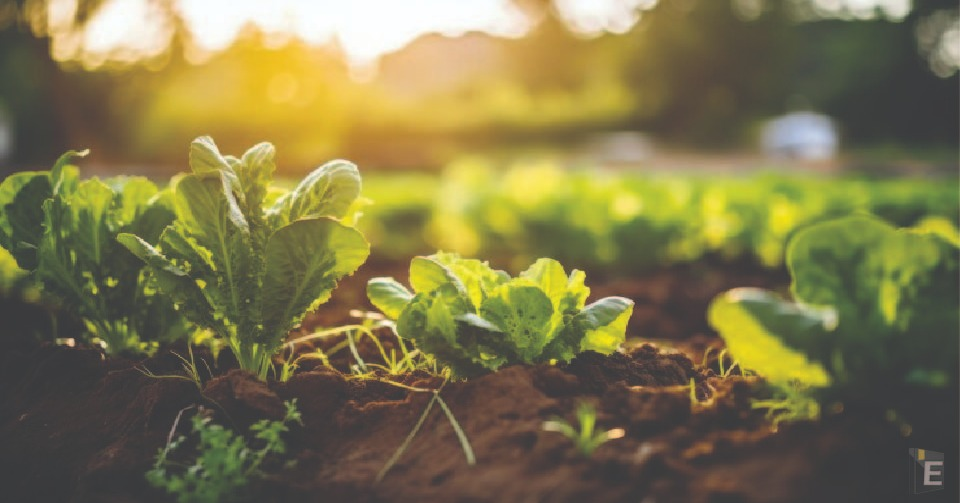


Welcome to our Agricultural General Knowledge (GK) Quiz and Answers blog, where we delve into the fascinating world of agriculture, farming practices, crop cultivation, and more! Whether you're a seasoned farmer, a curious student, or simply interested in understanding the backbone of our food systems, this Agricultural GK Quiz and Answers blog is your go-to destination. Test your knowledge with our carefully crafted quizzes covering a wide range of topics, including crop science, agricultural history, sustainable farming methods, and global agricultural trends. Each quiz is designed to challenge and educate, providing insights into the intricate workings of the agricultural industry.
In this article Agricultural GK Quiz and Answers, we are sharing the latest and most important Agricultural GK Questions related to Basic Science, Common Science, and Botany under the General Science section for those learners who are preparing for upcoming competitive exams.
Also, Read Latest Current Affairs Questions 2023: Current Affairs Today
"Stay ahead of the competition with our General Knowledge Mock Test and Current Affairs Mock Test!"
Q :
There is effective control of aphids and white flies?
(A) By fumigants or fumigants
(B) By stomach poison
(C) By contact insecticide
(D) By systemic insecticides
Prevention: When the white fly reaches the economic limit (6 adults per leaf), apply 300 EC or Oxydemethan Methyl 25 EC (Metasystax) and one liter of Neem based insecticide (Nimbicidin/Ashkar) in 250 liters of water alternately per acre. Spray in.
Which of the following elements plays an effective role in controlling the rate of transpiration?
(A) Phosphorus
(B) Potassium
(C) Zinc
(D) Magnesium
Plant Parameters – These plant parameters help plants control the rates of transpiration by acting as a resistance to the movement of water out of the plant. A pore in the cells of the outer layer of a leaf that is surrounded by two guard cells and is used for gas exchange.
Is banana edible?
(A) diploid
(B) Triple
(C) Quadruple
(D) None of these
Bananas are used raw or cooked in a variety of dishes from curries to banana chips, pakodas, fruit preserves, or simply baked or steamed.
What is the appropriate time for pruning grapes?
(A) January
(B) April
(C) July
(D) October
Pruning: To get continuous and good harvest from the vines, it is very important to prune them at the right time. When to prune: Pruning can be done when the vine is in dormancy, but the process should be completed before the buds burst. Generally pruning is done in the month of January.
'Hairless' disease usually occurs in which crop?
(A) Tide
(B) Millet
(C) Maize
(D) Wheat
Green ear disease is also known as soft hairy Asita disease. There is an outbreak of this disease in almost all the areas where millet is cultivated. Due to this disease, instead of grains, crooked green leaves start growing in the plants.
The crop which is known as 'Camel Crop' is?
(A) Corn
(B) Wheat
(C) Tide
(D) Millet
Jowar crop is considered a camel crop because it can grow in dry soils and withstand prolonged drought. It is a rain-fed crop, mainly grown in the states of Maharashtra, Andhra Pradesh, Tamil Nadu and Karnataka.
What will be the seed rate per hectare in Rizka?
(A) 10 – 15 kg
(B) 20 – 25 kg
(C) 30 – 35 kg
(D) 40 – 45 kg
Sowing – Sow at the rate of 20-25 kg seeds per hectare in rows at a distance of 20-25 cm. Rizka can be sown from the second fortnight of October to the first week of December.
The family of which cotton is a plant is?
(A) Solanaceae
(B) Malvaceae
(C) Leguminosae
(D) Cruciferous
It is a member of the Malvaceae family. There are two types of it found in the world. The first is known as native cotton (Gassypium arboreum) and (Ga; herbarium) and the second is known as American cotton (Ga, hirsutum) and (Barvadens).
Which of the following is not a monocotyledon crop?
(A) Corn
(B) Wheat
(C) Gram
(D) Paddy
Monocotyledons are plants whose seeds have only one cotyledon. Examples include garlic, onion, palm, coconut etc. If the seeds of any plant have two cotyledons, it is known as dicotyledonous plants. Examples include mustard, jute, lemon, orange etc. These are seen in angiosperm plants only when these plants have a seed coat.
What are the unnecessary but beneficial elements for plants?
(A) Carbon and Vanadium
(B) Vanadium and chlorine
(C) Vanadium and sodium
(D) Sodium and chlorine
A total of 16 nutrients are required for normal growth and development of plants. ,
• Plants obtain carbon, hydrogen and oxygen from air and water.
• Plants obtain nitrogen, phosphorus and potassium from the soil. ,
• Plants absorb calcium, magnesium and sulfur in small quantities.
Get the Examsbook Prep App Today